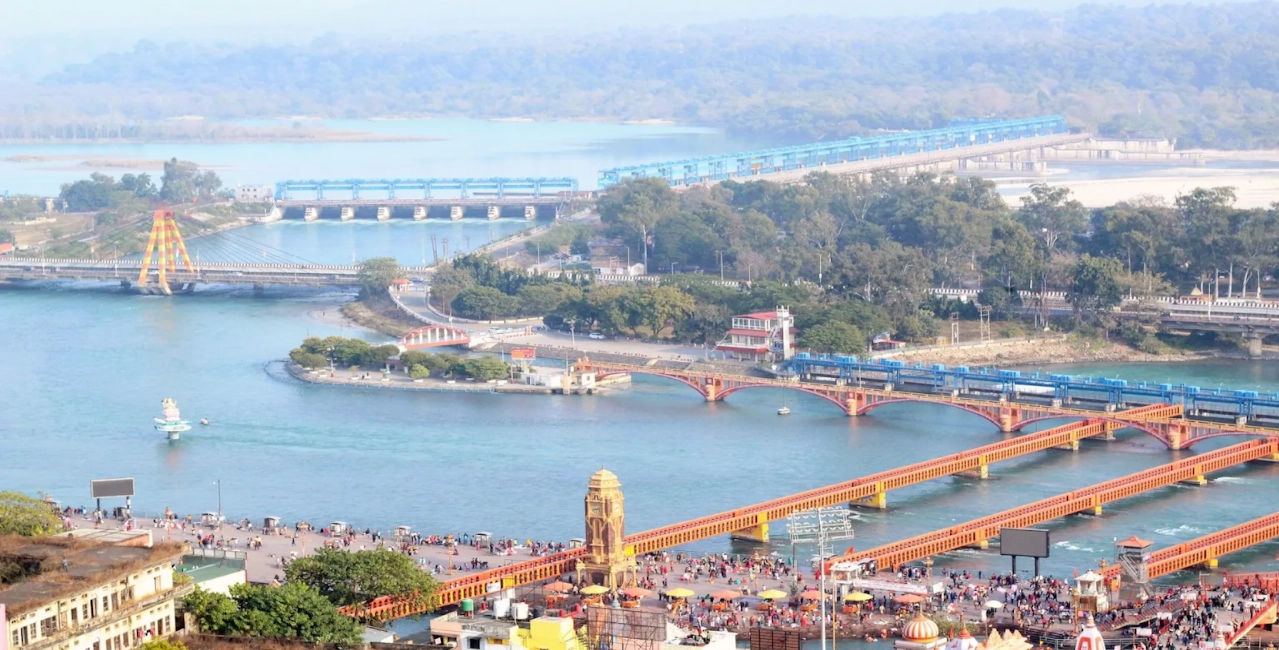Haridwar, one of the most sacred cities in India, is a place where spirituality, culture, and natural beauty converge. Situated in the northern state of Uttarakhand, Haridwar serves as a gateway to the four important pilgrimages of Uttarakhand, known as the Char Dham—Yamunotri, Gangotri, Kedarnath, and Badrinath. The city is located at the point where the Ganges River, considered the holiest river in Hinduism, emerges from the foothills of the Himalayas. Haridwar, literally meaning “Gateway to God,” is a magnet for pilgrims and tourists alike, drawn to its ancient temples, sacred ghats, and vibrant cultural festivals.
The Sacred Ganges and Ghats
The Ganges River is the lifeblood of Haridwar, and the city’s most significant feature is its numerous ghats, or steps leading down to the river. The most famous of these is Har Ki Pauri, meaning “Footsteps of the Lord.” It is believed that Lord Vishnu himself set foot on this ghat, making it a particularly revered site. Every evening, as the sun sets, the Ganga Aarti ceremony takes place at Har Ki Pauri, drawing thousands of devotees and tourists. The sight of countless oil lamps floating on the river, accompanied by the sound of bells, chants, and hymns, creates a mesmerizing and deeply spiritual atmosphere.
Other important ghats in Haridwar include the Vishnu Ghat, named after Lord Vishnu, and the Kusha Ghat, where ancient rituals are performed. Pilgrims believe that taking a dip in the Ganges at these ghats washes away their sins and purifies the soul, which is why the city sees an influx of visitors throughout the year, especially during religious festivals.
Temples and Spiritual Sites
Haridwar is home to a multitude of temples, each with its own unique history and significance. One of the most prominent is the Mansa Devi Temple, perched on the Bilwa Parvat hill. Dedicated to Goddess Mansa Devi, the temple is accessible either by a cable car ride or a steep trek, both offering panoramic views of the city and the Ganges River below. Pilgrims visit the temple to seek the blessings of the goddess and to have their wishes fulfilled.
Another important temple is the Chandi Devi Temple, located on the Neel Parvat hill. It is dedicated to Goddess Chandi, a fierce incarnation of Goddess Parvati, who is believed to have defeated the demon kings Shumbh and Nishumbh at this site. Like the Mansa Devi Temple, Chandi Devi is also accessible by a cable car, which provides a scenic journey over the lush green landscape.
Haridwar is also famous for the Daksheswara Mahadev Temple, dedicated to Lord Shiva. This temple holds immense historical and religious importance, as it is associated with the story of Daksha Yagna, where Sati, Lord Shiva’s consort, immolated herself. The temple complex is a significant pilgrimage site during the annual Kanwar Mela, when thousands of devotees, known as Kanwariyas, carry holy water from the Ganges to offer at Shiva temples across India.
The Kumbh Mela
Haridwar is one of the four cities that host the Kumbh Mela, the largest religious gathering in the world, which takes place every 12 years. The Kumbh Mela is a spectacle of faith, drawing millions of pilgrims, saints, and tourists from all over the globe. The main event of the Kumbh Mela is the Shahi Snan, or royal bath, when devotees immerse themselves in the Ganges, believing it to cleanse their souls and break the cycle of rebirth. The city comes alive with vibrant processions, religious discourses, and cultural performances, making it an unforgettable experience for all who attend.
Yoga and Wellness
Beyond its religious significance, Haridwar is also a center for yoga, meditation, and Ayurveda, attracting spiritual seekers and wellness enthusiasts. The peaceful environment, coupled with the presence of the sacred Ganges, makes it an ideal location for those looking to rejuvenate their mind, body, and spirit. Numerous ashrams and wellness centers offer courses and retreats in yoga, meditation, and holistic healing practices. Among them, the Patanjali Yogpeeth, established by yoga guru Baba Ramdev, is one of the largest and most renowned centers for yoga and Ayurveda in the world.
The Natural Beauty of Haridwar
Haridwar’s location at the foothills of the Himalayas provides it with a unique natural charm. The city is surrounded by lush greenery, with the Rajaji National Park located nearby. This national park is a haven for wildlife enthusiasts, offering opportunities to spot elephants, tigers, leopards, and various species of birds. The park’s dense forests, rivers, and scenic landscapes make it a popular destination for nature walks, jungle safaris, and bird watching.
Conclusion
Haridwar is more than just a pilgrimage site; it is a city where the past and present, the spiritual and the mundane, coexist in harmony. Its ghats, temples, and festivals continue to inspire and attract people from all walks of life. Whether you are a devout pilgrim, a spiritual seeker, or a traveler in search of India’s cultural richness, Haridwar offers an experience that is both profound and enriching. With its sacred river, ancient temples, and serene environment, Haridwar remains a timeless symbol of India’s spiritual heritage.


0 Comment